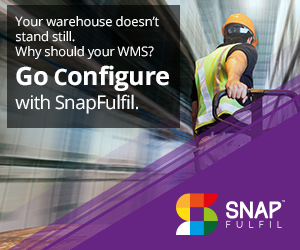Breaking the beer budget: Three reasons a slightly higher WMS investment benefits you in the long run
It’s true that UK businesses have tightened their belts over the last few years. Uncertainty surrounding Brexit’s effect on trade has meant a cautious approach to investments. And while recent reports show a more positive outlook, with the National Institute of Economic and Social Research estimating 1.9 percent GDP growth in 2018, it’s unlikely corporate executives will be breaking out the champagne anytime soon.
This budget-conscious mindset has trickled down through the enterprise, enabled by greater access to data. Managers are expected to make a business case, grounded in real numbers, before the c-suite approves any significant investment. Naturally, higher investments will require more robust arguments.
When it comes to warehouse management software, it’s easier to make a case for a cheaper solution. On the surface, it may appear you gain all the functionality you need at a lower cost. Warehouses that have long operated on manual processes may decide that the least expensive solution is still a step up. But while there’s immediate gratification in choosing a cheaper WMS, in the long run, the costs will add up.
Let’s take a closer look at why a higher initial WMS investment can ultimately save you money:
1. Greater functionality = greater efficiency
What warehousing pain points drove you to consider a WMS? Too many inventory errors, inefficient processes, poor productivity, high labour costs, or all of these things? While even the most basic RF-driven WMS will give you improved inventory accuracy and visibility, if what you really need is to do more with the same or less resources, then an entry level system won’t drive the efficiency improvements you’re targeting.
With a real-time task management system, you’ll be able to move product through your warehouse quicker, increasing capacity and, ultimately, revenue. A fit-for-purpose cloud WMS will pay for itself.
However, if you compromise on less functionality for a lower upfront cost, you may purchase a system that doesn’t fully address your operational needs. You’ve spent the money, but you fail to increase efficiency to the level needed to justify the WMS in the first place. When you interview potential WMS vendors, especially those that tout their cheaper cost, make sure you get an in-depth explanation as to how their WMS will address your specific pain points.
Buy cheap, buy twice
When your company decides to make a significant WMS investment, implementation is not a process you want to complete twice in a short time frame. That’s because introducing a new WMS to your warehouse is a complex process involving several weeks of installation, and months of fine-tuning – not to mention the time you must invest in training your staff.

Implementing a WMS only to discover that it doesn’t ‘do what it said on the tin’ or that you’ve outgrown it within the first six months is a waste of time and money.
By making a slightly higher investment upfront and taking the time to research which solution truly fits your operation, you can avoid these scenarios completely.
Get ready for growth
All companies dream of exponential sales growth but, for most, this comes with growing pains. As orders skyrocket, you’ll be expected to keep the same level of customer service. If it’s not ready to handle increased demand, your warehouse management system could significantly hinder your growth.
Choosing a cheaper WMS may fit your current business plan, but as you grow, your WMS may struggle to scale – an entry level system will comfortably handle a couple of hundred orders per day, but won’t cope when this number gets into the thousands. A best-of-breed cloud WMS is designed to scale, so the system you invest in as a small business can be the same solution you run as a multinational corporation. Your technology should be an asset, not a roadblock.
Invest a little more now – save much more later
For managers researching a new WMS, there may be pressure to focus on the cheapest solution. That’s why it’s important to complete a thorough cost-benefit analysis and present it in defence of your chosen WMS. Your WMS vendor should be able to provide you with high-level savings estimates to strengthen your case.
Finally, remember that you’re ultimately after the same goal as your senior management – cost savings – so learn to speak their language. A better understanding of your WMS options, and how they fit your company’s long-term goals, will help you choose a solution that helps you achieve that goal, while avoiding cheaper solutions that could eventually sink the budget.



